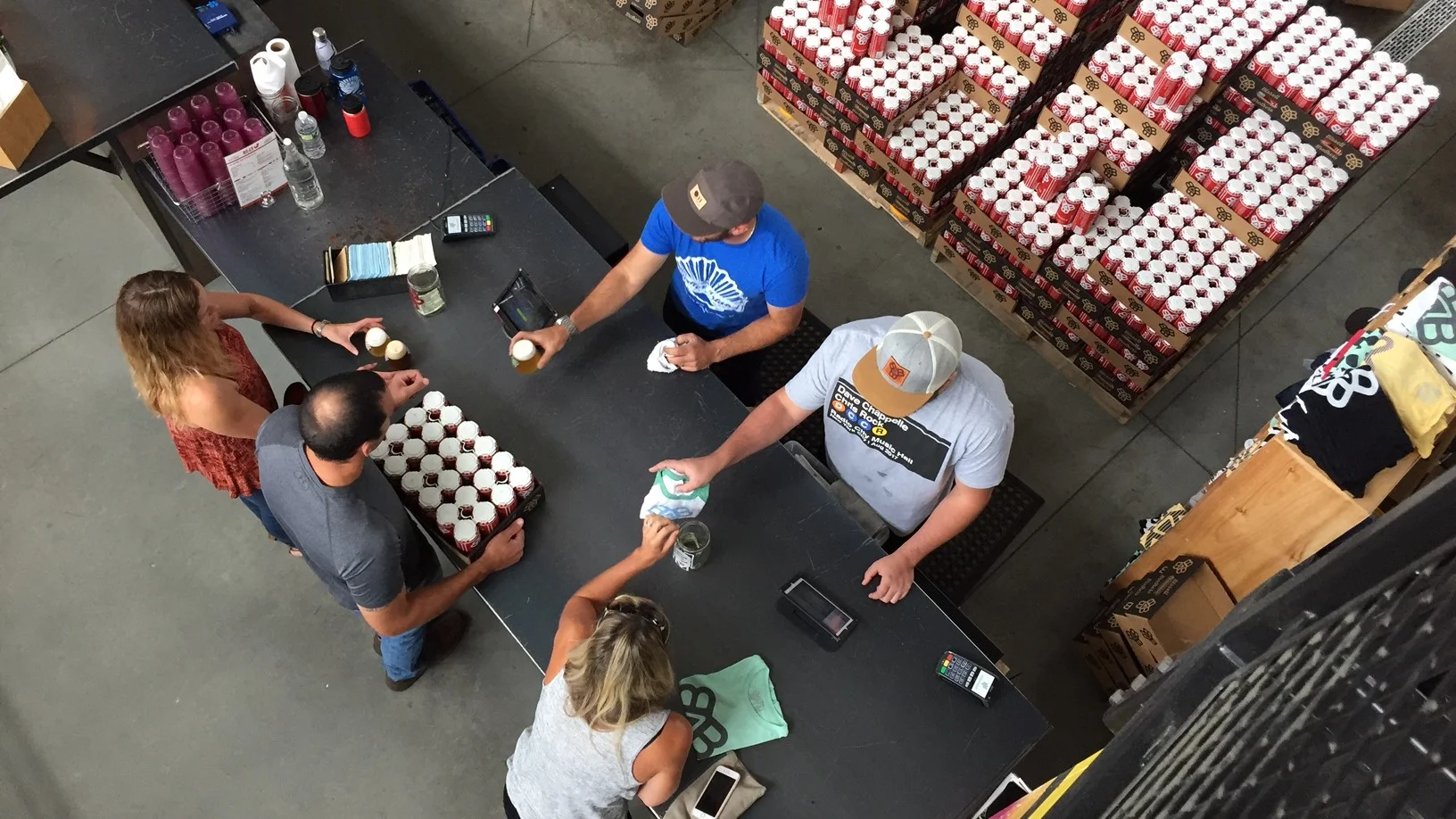On Monday, the Supreme Court struck down a 1992 law that banned sports betting, opening the door to an estimated $150 billion in legal gambling. The beer industry will almost certainly benefit because 1) gambling increases fan engagement and 2) fans drink when they watch sports.
Read MoreMembers of a bottle club receive a certain number of special-release beers and are guaranteed access to rare beers, plus other perks. But for the most part, the access is secondary. Beer clubs allow breweries to identify their most avid fans and connect more deeply to them.
Read MoreThere are over 6,300 breweries operating in the United States today. Just five years ago, that number was 2,475, and a chart of the growth looks like the dreaded hockey stick. Have we reached peak breweries?
Read MoreThe Oregon Liquor Control Commission has totaled the sales figures by Oregon breweries, and the results reflect what we're seeing nationally: middle-sized breweries show the most strength while bigger breweries are struggling to maintain their positions. But there are surprises, too.
Read MoreIn an interesting development, Stone Brewing Company has decided to sue MillerCoors over its use of the word "Stone" in recent Keystone branding. The news was announced with the typical bombast for which Stone and founder Greg Koch are famous--but that doesn't mean the lawsuit isn't serious.
Read MoreEvery time you pick up a six-pack from the store, it has already been sold twice before. That's because we have a system that includes a mostly-hidden middleman who neither makes nor nor sells the beer to customers. Knowing that middleman is essential to understanding the American beer biz.
Read More--Post updated with revised figures-- When the GOP pushed through tax cuts this week, they included a tax cut for breweries. It's a bipartisan proposal that's been kicking around with broad support that will actually benefit the little guy--in this case craft breweries. But is it good policy?
Read MoreI guess we have to talk about Dilly Dilly. It's the catch phrase in the latest ad campaign launched by Bud Light, one that has achieved rare virality on social media. No matter how you slice it, it's become a national meme. But has it been good for Bud Light?
Read MoreFive years ago, Adam Milne established Old Town Brewing's leaping stag as a legal trademark. But for the past two years, he's been locked in a legal battle with the City of Portland, which wants to use that logo so it can license products by AB InBev. Here's the whole maddening story.
Read MoreYesterday, Boston-based Harpoon announced the purchase of contract brewery Clown Shoes. But this post isn't going to be about the acquisition. Rather, it's about how companies mature and markets sand off rough edges of any company that wants to stay around.
Read MoreThis follows the summer launch of a effort to enroll member breweries an independent seal program. "Take Craft Back" is the second prong in the larger campaign. It was a surprising, creative, and frankly aggressive move to engage the fight against "big beer."
Read MoreLike every brewery of a certain age, Hopworks once-novel IPA started to taste dated once the newer wave arrived a few years ago. In a surprising, fascinating move, Hopworks has reformulated their flagship, a makeover that changes everything (including the label) except the name.
Read MoreIn one of the tinier pockets of the brewing world, a heated debate rages. What should Americans call the beer made in the manner of spontaneously-fermented Belgian lambic? This wasn't remotely an issue until about 2007, when Allagash Brewing started a program that followed the practices quite closely. There may have been some efforts along the way toward traditional lambic-style beer, but Allagash built a dedicated coolship room and committed to an ongoing program making the beer. Last year, one of the small club of Americans making these beers decided to name and codify it, and thus began the debate.
Read MoreIn 1993, Redhook's Paul Shipman made an interesting decision--he decided to reach out to Anheuser-Busch. That phone call would eventually lead to the first investments by big beer into smaller breweries, as the company bought minority stakes in Redhook and later Widmer.
Read MoreThirty-two years ago, three psychologists published a paper "On the Misperception of Random Sequences"--also known as the "hot-hand fallacy." They looked at several data sets and concluded that the previous performance of the player had no effect on the likelihood he'd make any given shot.
Read MoreEver since he released his memoir, Quench Your Own Thirst: Business Lessons Learned Over a Beer or Two, Boston Beer's Jim Koch has been on a mission to shape his legacy. He'd love to be seen as not just a man who conquered the business, but one who founded and nurtured an industry.
Read MoreIn relatively short order cans have gone from a package customers will grudgingly accept to something entirely unexpected. Now, for certain breweries and certain types of beer, they signal freshness and trendiness.
Read MoreYesterday two large concerns announced two very different acquisitions. The first was routine: Constellation Brands, who stunned the beer world by paying a cool billion dollars for Ballast Point two years ago, announced the purchase of Florida's Funky Buddha.
Read MoreI was interested in two very basic questions: 1) Did breweries believe it was important for consumers to know about breweries' independence?, and 2) were they planning to use the seal? I canvassed a half dozen breweries of different sizes from different parts of the country and got responses from four--Ninkasi (OR) and Harpoon (MA), large craft breweries, Port City (VA), a medium-sized brewery, and Gigantic (OR), a small brewery.
Read MoreYesterday, the Brewers Association announced a logo--or "seal" in their jargon--certifying a brewery's independence. It demonstrates the Brewers Association has narrowed its focus to what is truly important to members and is preparing to move to the offense. This is a smart initiative.
Read More



















